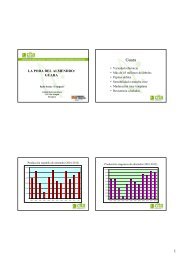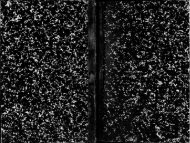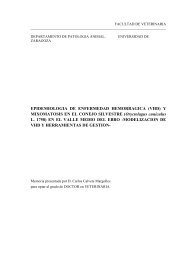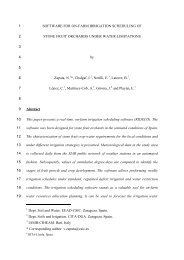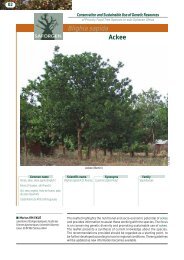1 A Recursive Dynamic Computable General Equilibrium Model For ...
1 A Recursive Dynamic Computable General Equilibrium Model For ...
1 A Recursive Dynamic Computable General Equilibrium Model For ...
Create successful ePaper yourself
Turn your PDF publications into a flip-book with our unique Google optimized e-Paper software.
Appendix A: Nesting<br />
The choice of function under conditions of model calibration favours the use of<br />
simpler 'convenient functional forms'. The drawback, however, is that simpler functional<br />
forms greatly restrict the number of parameters within the function, which in turn inhibits<br />
the degree of flexibility when characterising producer/consumer behaviour.<br />
A common response to this problem is to employ a separable nested (or hierarchical)<br />
structure, whereby an assumption is made about the partitioning of the elements of the<br />
underlying production/utility function into different groups and aggregations. Hence, the<br />
assumption of separability implies that constrained optimisation is undertaken in several<br />
stages. Nested structures then allow a greater number of elasticity parameters at each stage<br />
of the production/utility function. This increases the flexibility of the model, without<br />
burdening computational facility.<br />
Separability and Aggregation<br />
In order to undertake a two-stage nested optimisation procedure, two conditions<br />
must be met. First, to permit a partitioning of the inputs, Strotz (1957) devised the concept<br />
of weak separability. A precise definition of separability is given by Chambers (1988) who<br />
notes,<br />
'separability hinges on how the marginal rate of technical substitution (MRTS) between two inputs responds<br />
to changes in another input' (pp.42).<br />
To illustrate the relationship between separability and multi-stage optimisation, a theoretical<br />
example is employed. Assume a 3 factor (xi i=1,2,3) production function which is of the<br />
form: 19<br />
Y = f ( X , x3<br />
)<br />
(A.1)<br />
where input X is represented as an aggregator function consisting of inputs x1 and x2:<br />
, ) x g X = (A.2)<br />
( 1 2 x<br />
A schematic representation of this two-level nested structure is presented in figure 2.5.<br />
19 This theory is equally applicable to the utility function in consumer theory.<br />
51



